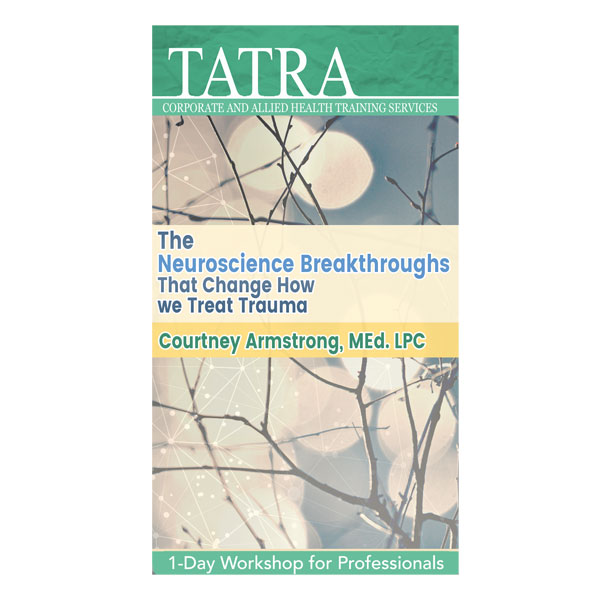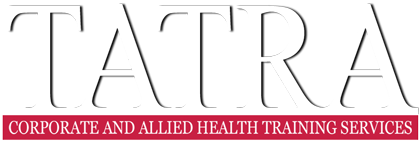The Neuroscience Breakthroughs that Change How we Treat Trauma

Courtney Armstrong, MEd. LPC
Come to this workshop and join Courtney Armstrong who will provide you with step-by-step instructions and techniques you can use in each phase of trauma treatment. This trauma training will specifically focus on skills and techniques that will assist in creating the phenomena of memory reconsolidation. Courtney Armstrong will show you why memory reconsolidation is necessary for effectively and permanently healing trauma. She will give you a simple protocol to use to reconsolidate a traumatic memory in as little as one session!
Course Dates
Sydney: 9 September 2019, SMC Conference & Function Centre
Melbourne: 11 September 2019, Bayview on the Park
Brisbane: 13 September 2019, Mantra on Queen
Adelaide: 16 September 2019, Next Gen Memorial Drive
Perth: 18 September 2019, Wollaston Conference Centre
9:15am to 4:30pm
Were you taught to use medication, CBT, Exposure and other traditional therapy approaches to treat trauma? Did you know that these approaches are limited when it comes to healing trauma at the deeper, emotional level of the brain?
Come to this workshop and join Courtney Armstrong who will provide you with step-by-step instructions and techniques you can use in each phase of trauma treatment. This trauma training will specifically focus on skills and techniques that will assist in creating the phenomena of memory reconsolidation. Courtney Armstrong will show you why memory reconsolidation is necessary for effectively and permanently healing trauma. She will give you a simple protocol to use to reconsolidate a traumatic memory in as little as one session!
This workshop will let you walk away knowing exactly what to do to help your clients reclaim their lives after trauma!
Learning Objectives
- Assess how emotional trauma is processed in the brain.
- Analyze why exposure techniques alone are not enough to relieve post-traumatic stress symptoms.
- Breakdown the 3 phases of trauma informed treatment.
- Compile recent neuroscience discoveries regarding memory reconsolidation and its implications for treating trauma.
- Characterize the 5 steps that all evidence-based trauma therapies have in common and how to apply them to safely and painlessly reconsolidate traumatic memories.
- Utilize two experiential techniques that can be used to resource, uplift, and empower clients and diminish feelings of shame and helplessness.
- Apply two interventions you can use to help clients reconnect to a healthy sense of self, relationships, and the world.
Program Outline
The Emotional Brain: A User Friendly Guide
- How an almond, a seahorse, and a Mohawk can help you understand your brain
- A healthy emotional brain & how it develops
- 7 primary emotional systems & how to influence them
- How trauma and disrupted attachment alter the brain
- 3 neuroscience breakthroughs that change how we treat trauma
- Rewire the brain for resilience, connection and post-traumatic growth
The 3-Phase Model of Trauma-Informed Treatment
- 3 neuroscience breakthroughs that change how we treat trauma
- Rewire the brain for resilience, connection and post-traumatic growth
The 3-Phase Model of Trauma-Informed Treatment
Interventions for Assessment, Safety and Stabilization
- 5 simple questions to assess for PTSD
- Beyond words: build trust and safety with right brain to right brain communication
- Help clients understand trauma responses
- Activate the brain’s instinct to heal through alpha-theta states
- Calm fear with mindfulness and imagery techniques
- Deal with dissociation: practical tools for grounding and orienting
- Shift shame and nurture self-compassion
- Defuse anger with play and humor
- Empower with movement and metaphor
Painlessly Reprocessing Traumatic Memories
- Revise not relive: why exposure can retraumatize
- Memory reconsolidation: the brain’s own mechanism for healing trauma
- 5 simple steps for painlessly reconsolidating a traumatic memory
- Create the future-self template and the brain’s blueprint for healing
- Neutralize negative beliefs with resourceful emotional states
- Facilitate corrective emotional experiences with powerful imagery, metaphor, music and movement techniques
Facilitating Post-Traumatic Growth
- The 3 qualities of post-traumatic growth
- Create a positive post-trauma identity
- Nurture a secure attachment system after trauma
- Find meaning and purpose after trauma
- Hardwire happiness and the power of intention
Applications for Special Populations
- Heal experiences for sexual trauma survivors
- Recover from childhood abuse and neglect
- Transform traumatic grief after sudden or violent deaths
- Rebound from medical trauma, car accidents and disasters
- Assist military, police and first responders
- Foster resilience in children and adolescents after trauma
- Respectfully work with different cultures and faith traditions
- Prevent burnout and vicarious trauma with simple self-care techniques
- APS: Activities do not need to be endorsed by APS. Members can accrue 7 CPD hours by participating in this activity
- AASW: Members can accrue 7 CPD hours by participating in this activity
- ACA: Members can accrue 5 CPD points by participating in this activity
A certificate of attendance will be emailed to participants following the workshop.


